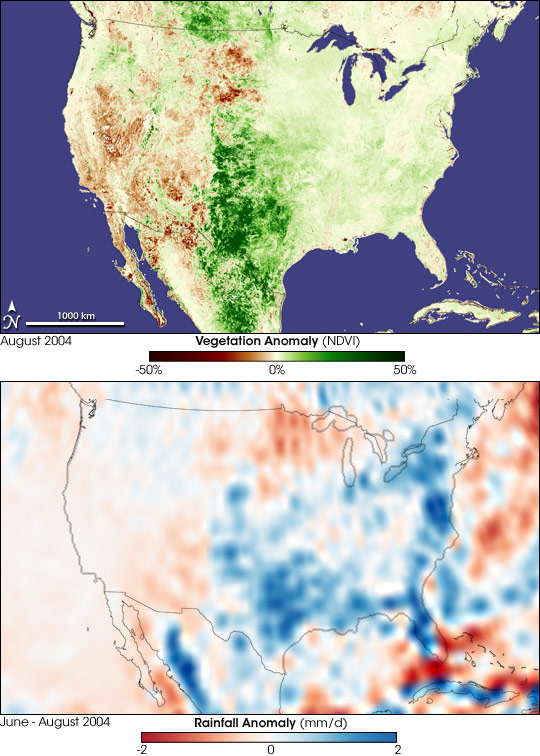


Farmers never expect the weather to be perfect; there’s always that unexpected storm, the early frost, or endlessly sunny, dry skies. But in 2004, Mother Nature treated U.S. farmers to a nearly perfect summer, the best on record. As a result, most major crops in the U.S. Midwest—corn, soybeans, sorghum, and alfalfa hay—produced a record yield. It was the first time that all four crops set new records in the same year.
Stanley Changnon, a geographer at the University of Illinois at Urbana-Champaign, and his son, David Changnon, a geographer at Northern Illinois University in DeKalb, set out to find out why the crops all did so well. They analyzed climate conditions and found that the summer of 2004 was like no other summer on record. Temperatures were below average from June to August, rainfall was above average, and skies were frequently clear and sunny. No other summer in the past 117 years provided all three conditions. Summers that were cool and rainy also tended to be cloudy, with few sunny days. Summers with a high number of sunny days were also hot and dry. The summer of 2004 gave farmers the perfect balance of sun, rain, and cool air.
These images, created from satellite data, show the thriving plants and some of the conditions that produced them. Crops were not the only plants that prospered during 2004, as the top image reveals. Vegetation along the midwestern corridor of North America from Mexico to Canada thrived. The strip of green in the center of the image shows where plants were denser and healthier than average in August 2004. The image is a composite of data collected by the Spot Vegetation satellite and was generated at NASA Goddard Space Flight Center.
The lower image illustrates rainfall across the United States in June, July, and August 2004. Regions that received more rain than normal are blue, while areas that received less are red. The blue areas of above-average rainfall correspond well with the green regions that represent above-average vegetation. The rainfall anomaly image was created using data from NASA’s TRMM satellite.
For more information about growing conditions in 2004, see “Unique Weather a Factor in Record 2004 Midwest Crop Yields”.
Imagery created by Jesse Allen, Earth Observatory, using data provided courtesy of the USDA Foreign Agricultural Service and processed by Jenn Small and Assaf Anyamba of the GIMMS Group at NASA GSFC [NDVI]. Rainfall anomaly image based on the Global Precipitation Climatology Product produced at NASA Goddard Space Flight Center.